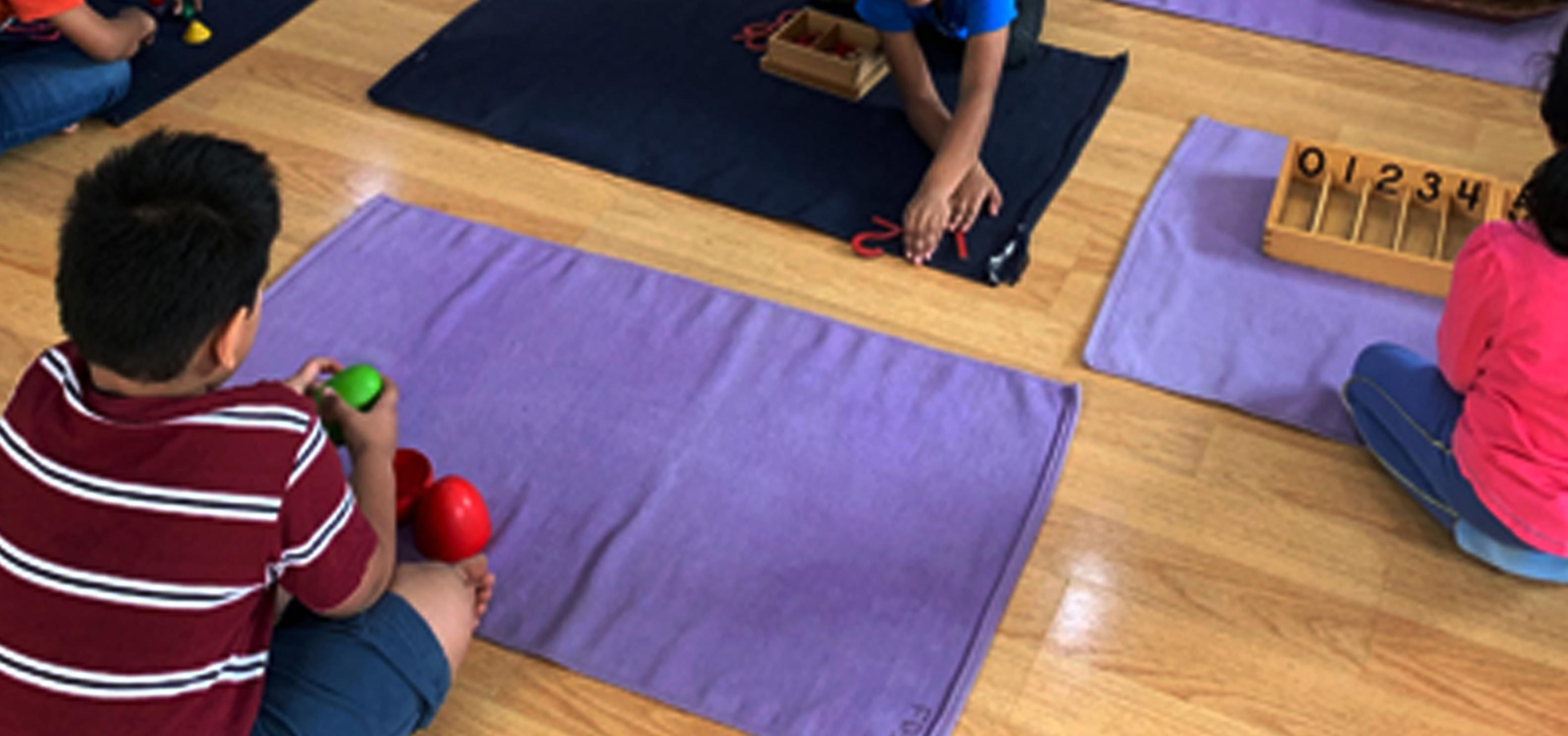Montessori education is a unique educational approach that emphasises hands-on learning and encourages independence in children. One of the key elements of this approach is the use of mats. Mats are a crucial tool in Montessori classrooms as they provide children with a clear and defined workspace to engage in activities.
Firstly, let's take a look at what Montessori mats are. Montessori mats are made of a soft and durable material such as felt or cotton and are usually circular or square in shape. They are available in various colours and sizes and are used to define a child's workspace. Mats provide a clear boundary for activities, and children are encouraged to keep their work within the mat's borders.

Activities involving mats:
Mats are used in many activities in the Montessori classroom. For example,
- In the practical life area, children use mats for activities such as pouring and spooning exercises, sewing, and folding activities.
- In the language area, mats are used for activities such as sound games and letter matching exercises.
- In the maths area, mats are used for activities such as counting and sorting exercises.
Benefits of using maps:
- Helps children to develop their concentration and focus: By providing a defined space for work, children are better able to focus on the task at hand. The use of mats also helps children to develop their spatial awareness and motor skills. Children learn to move their bodies within the boundaries of the mat, and this helps to develop their sense of balance and coordination.
- Help to promote independence in children: By providing a defined workspace, children are encouraged to take responsibility for their own learning. They learn to select the appropriate materials, set up their workspace, and clean up after themselves. Mats also help children to develop their organisational skills as they learn to keep their work within the boundaries of the mat.
In conclusion, mats are an essential tool in Montessori education. They provide a clear and defined workspace for children to engage in activities and promote concentration, spatial awareness, motor skills, independence, and organisational skills.

